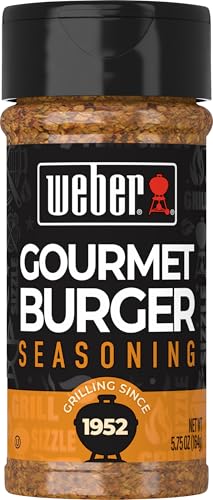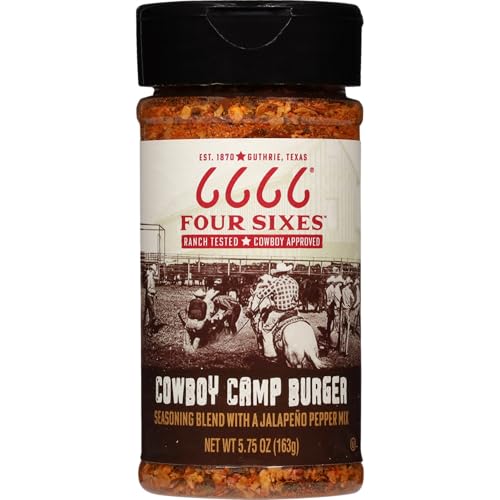Key Takeaways
- Water Conservation: Water-saving burger recipes utilize ingredients that require significantly less water, such as plant-based proteins and low-water vegetables, helping to combat water scarcity.
- Healthier Options: These recipes often lead to healthier meal choices, as they incorporate plant-based ingredients with lower saturated fats and higher fiber content.
- Sustainable Ingredients: Key ingredients like lentils, chickpeas, and zucchini not only enhance flavor but also contribute to lower overall water usage in food production.
- Creative Cooking: Experimenting with various plant-based proteins, water-efficient vegetables, and flavorful herbs and spices can result in gourmet burgers that are both delicious and environmentally friendly.
- Simple Recipe Ideas: Recipes like Veggie Delight Burger, Quinoa and Black Bean Burger, and Savory Chickpea Burger showcase how easy and tasty it is to adopt water-saving cooking practices.
- Batch Cooking: Preparing large batches of water-saving burger patties in advance ensures quick, convenient meals that promote sustainability without sacrificing flavor.
If you’re like me, you love a good burger but might not think about the water it takes to make one. With growing concerns about water scarcity, it’s time to rethink our culinary habits. Luckily, I’ve discovered some delicious water-saving burger recipes that not only satisfy your cravings but also help conserve this precious resource.
Overview of Water-Saving Burger Recipes
Creating mouthwatering burgers while being mindful of water consumption is my passion. Being a former burger joint owner, I’ve explored countless ways to craft unique recipes that don’t compromise on flavor. Water-saving burgers emphasize the use of ingredients that require less water for production, helping us combat water scarcity without sacrificing taste.
I love experimenting with plant-based proteins, which typically consume significantly less water compared to traditional beef. Ingredients like lentils, chickpeas, and quinoa not only create hearty textures but also pack a punch in nutrition. For instance, a lentil burger can save around 1,200 gallons of water compared to a beef burger, making it a fantastic choice for both flavor and sustainability.
Additionally, I incorporate vegetables that thrive in low-water conditions, such as zucchini, bell peppers, and sweet potatoes. These add flavor and color to my creations, allowing for a diverse range of toppings and combinations. When I grill a sweet potato burger, I often pair it with a zesty avocado spread, creating a delicious, rich flavor profile while minimizing water usage.
For the adventurous spirits, I’ve also experimented with unique ingredients like black beans and mushrooms. These not only deliver moisture but also enhance flavor, delivering satisfaction that rivals any traditional burger. When I stack a black bean burger with fresh salsa, it’s a crowd-pleaser at any gathering.
Whether I’m cooking for friends or family, my water-saving burger recipes continue to inspire creativity in the kitchen. By focusing on sustainable ingredients, I ensure everyone enjoys delicious, satisfying meals while playing a part in preserving our planet’s resources.
Benefits of Water-Saving Cooking
Water-saving cooking not only supports the environment but also enhances our health. By adopting methods that promote water conservation, I find new ways to create delicious burgers while being mindful of our planet.
Environmental Impact
Reducing water usage in the kitchen helps preserve our vital resources. Traditional beef production requires over 1,800 gallons of water per pound, while plant-based proteins, like lentils or chickpeas, only need about 500 gallons. Using these ingredients in my burger creations contributes to lower overall water consumption. Additionally, opting for vegetables that require less water, such as zucchini and bell peppers, supports sustainable farming practices. Every juicy bite I take represents a small but significant step toward combating water scarcity.
Health Advantages
Water-saving cooking habits often lead to healthier meal options. Plant-based ingredients offer lower saturated fats and higher fiber levels compared to beef. Enjoying lentil or black bean burgers not only satisfies my cravings but also boosts energy and supports digestive health. Incorporating various colors of low-water veggies into my burgers further packs in the vitamins and minerals. Adopting these cooking practices ensures I keep my meals nutritious while still creative and flavorful, making every bite a delightful experience.
Key Ingredients for Water-Saving Burgers
Creating delicious burgers while being mindful of water usage is a fun challenge. By selecting the right ingredients, I can whip up unique recipes that impress friends and family without compromising on flavor.
Alternative Proteins
In my quest for innovative burgers, alternative proteins take center stage. I love using lentils, chickpeas, and quinoa, which not only offer great texture but also save a ton of water compared to traditional meat. For instance, a lentil burger packs protein and fiber, making it hearty and satisfying. Similarly, black beans work beautifully, providing a rich, earthy flavor that’s hard to resist. Plus, these plant-based proteins require only about 500 gallons of water per pound, significantly less than beef’s 1,800 gallons. Incorporating these alternatives keeps my burgers creative and environment-friendly.
Water-Efficient Vegetables
Water-efficient vegetables truly elevate my burger game. I frequently reach for zucchinis, bell peppers, and sweet potatoes—they add vibrant colors and robust flavors. Grilling zucchini slices or incorporating diced bell peppers into my patties brings a refreshing crunch that never disappoints. Sweet potatoes not only add natural sweetness but also make for a delightful creamy texture when mashed into burgers. Using these low-water veggies ensures I’m serving up wholesome, tasty meals while contributing to water conservation. Each ingredient brings something special, making every burger a unique culinary experience.
Delicious Water-Saving Burger Recipes
Creating unique and mouthwatering burgers brings me endless joy. Water-conserving ingredients are the key to making not only tasty but also environmentally friendly burgers. Here are three delicious recipes that save water without sacrificing flavor.
Recipe 1: Veggie Delight Burger
For a refreshing take, I love making the Veggie Delight Burger. I combine grated zucchini, chopped bell peppers, and shredded carrots in a bowl. Adding breadcrumbs and a flaxseed egg binds everything together. With warm spices like cumin and garlic powder, I season the mixture before forming patties. Grilling these beauties enhances their flavor. Topping with avocado and fresh spinach adds creaminess and crunch. Each bite bursts with freshness while conserving water with every ingredient.
Recipe 2: Quinoa and Black Bean Burger
The Quinoa and Black Bean Burger never fails to impress. It starts with cooked quinoa and black beans, which provide protein and texture. I mash the beans slightly before mixing them with diced onions, cilantro, and a sprinkle of chili powder. Binding them with breadcrumbs ensures firm patties. Grilling the burgers locks in all the flavor. I love finishing with a slice of tomato and a dollop of yogurt. This burger not only satisfies but also aligns with my passion for creating wholesome meals.
Recipe 3: Savory Chickpea Burger
For a hearty option, the Savory Chickpea Burger tops my list. I mash canned chickpeas and mix them with minced garlic, chopped parsley, and a splash of lemon juice. The addition of oats gives it a satisfying texture. Forming the mixture into patties makes them ready for grilling. I enjoy serving these with a spicy tahini sauce. Each burger packs a solid punch of flavor while using ingredients with a low water footprint, making it a smart choice for both taste and sustainability.
Tips for Creating Your Own Water-Saving Burgers
Creating your own water-saving burgers is all about exploring flavors while being resourceful with ingredients. Here are some tips to get you started on crafting unique, mouthwatering burgers that make a positive impact on our planet.
- Experiment with Base Ingredients: Mix and match plant-based proteins. Try using lentils, chickpeas, or black beans as a base. Each brings a distinct texture and flavor profile, letting you customize burgers to suit your taste.
- Incorporate Water-Efficient Vegetables: Select vegetables known for low water usage. Zucchini, bell peppers, and sweet potatoes not only add nutrition but also enhance the burger’s flavor and moisture without high water requirements.
- Add Grains and Seeds: Use quinoa, oats, or ground flaxseeds for added texture and binding. Quinoa is packed with protein and fiber, while oats provide a hearty feel to your burgers.
- Maximize Flavor with Herbs and Spices: Fresh herbs and spices can elevate your burgers without the need for excess ingredients. Basil, cilantro, and smoked paprika can transform a simple burger into a gourmet experience.
- Get Creative with Toppings: Make toppings an essential part of your creation. Opt for low-water ingredients like avocados, sprouts, or pickled vegetables. These can enhance flavor and add significant visual appeal.
- Grill with Care: Cooking on a grill helps reduce the need for added fats while infusing your burgers with a delightful smoky flavor. If you’re concerned about sticky patties, oil your grill grates lightly to prevent sticking.
- Make a Big Batch: Prepare a large batch of water-saving burger patties in advance. Freeze them for quick meals that don’t compromise on taste or sustainability.
- Learn from the Classics: Take inspiration from traditional burger recipes and adapt them using water-efficient ingredients. By swapping out beef for a chickpea or lentil mash, you retain beloved flavors while cutting water usage dramatically.
Getting creative with water-saving burgers is not just about taste; it’s a fun way to innovate in the kitchen while caring for our environment. Each burger you create becomes a part of your contribution toward a sustainable future.
Conclusion
I hope you’re as excited as I am about these water-saving burger recipes. They’re not just tasty but also a simple way to make a positive impact on our planet. Every time we choose plant-based ingredients and low-water veggies, we’re taking a step toward sustainability while enjoying delicious meals.
Experimenting with these recipes can be a fun adventure in the kitchen. I encourage you to get creative with flavors and textures. Each burger you make is a chance to savor something unique while being mindful of water conservation. Let’s keep exploring new ways to enjoy our favorite foods while caring for our environment. Happy cooking!





